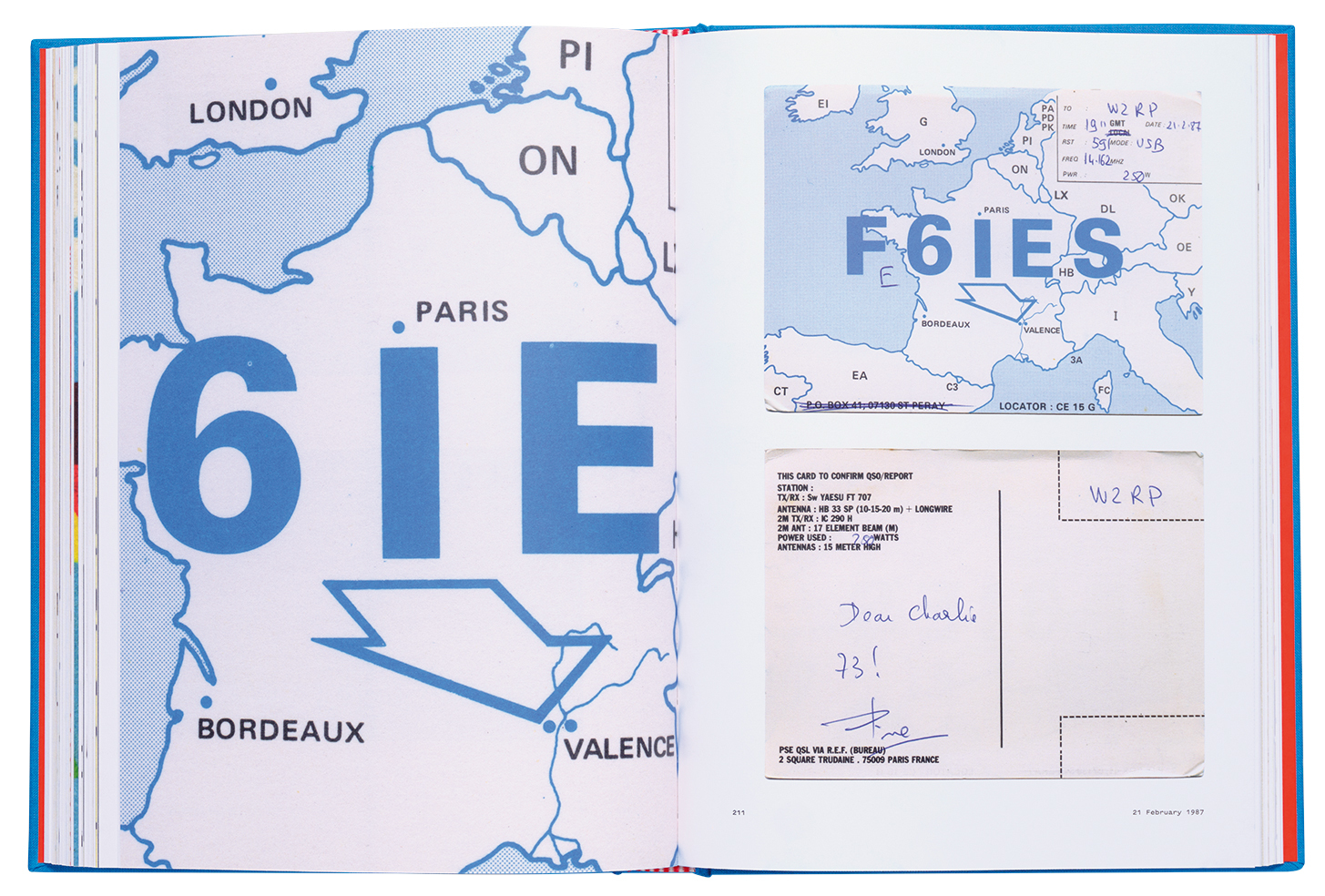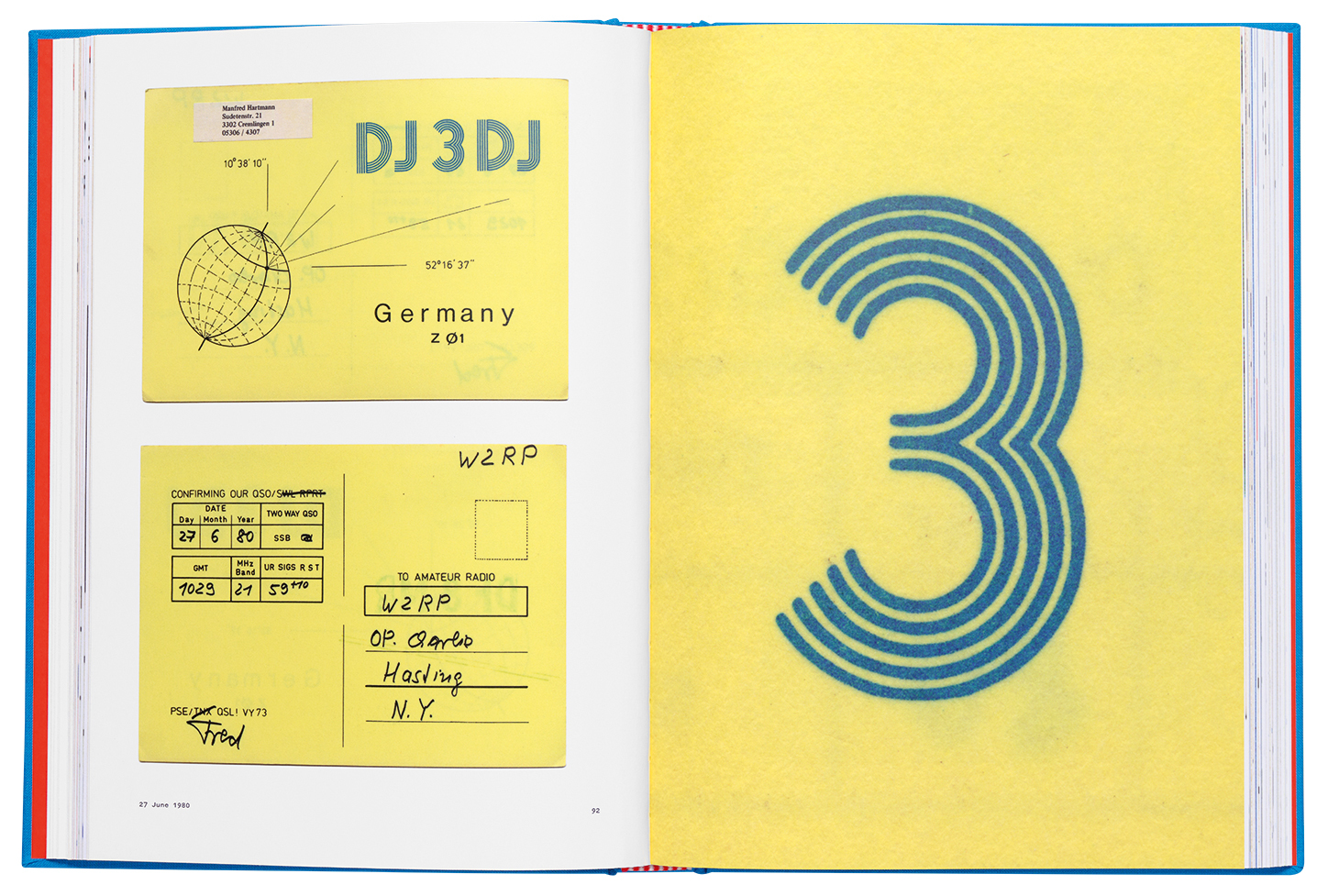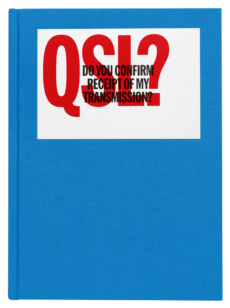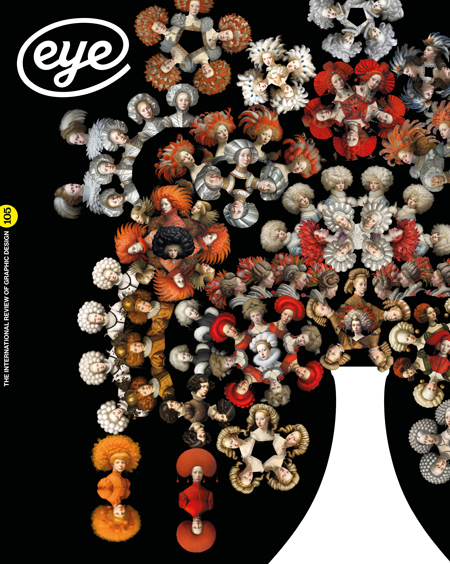Autumn 2023
Across the waves
QSL? (Do You Confirm Receipt of My Transmission?)
$50, published by Standards Manual
In 2020, New York designer Roger Bova came across a large collection of ‘QSL’ cards at a flea market. These custom-designed postcards are routinely sent between amateur radio operators to mark a recent communication and provide the recipient with a record of the long-distance conversation. Details of the connection – call signs, timings, frequency etc – are logged while the rest of the space, often the entire front of the card, is given over to a design that reveals something of the sender and their location. From utilitarian typography to hand-drawn illustration and amateur graphics, each QSL card is both a practical document and an expressive visual message.
Bova discovered that he had in fact purchased the correspondence of a single operator known by the call sign W2RP, one Charles Hellman of Hastings-on-Hudson, New York, a radio enthusiast who died in 2017 aged 106. More than 150 of his cards are shown in QSL? (Do You Confirm Receipt of My Transmission?), $50, published by Standards Manual. Hellman was, according to his New York Times obituary, ‘the longest continuously licensed amateur radio operator in the United States’ and had made contact with hundreds of other radio operators across the world (cards shown from France, above, and Germany, below).

Marc Da Costa introduces the collection with a brief history of radio’s emergence, the ascension of the amateur operator in the years following the Second World War, and the international community that grew over the coming decades, one that transcended geopolitical borders. (The prevalence of connections between American and Soviet operators caused some concern during the Cold War.) The things that brought users together – radio waves and rigs, transmission masts and antennae – appear often within QSL card designs, while maps and symbols of specific places feature widely. One operator commenting in a 1962 radio mag article on ideal design approaches notes how a fellow operator’s ‘card data flows like a story’. W2RP’s cards – ‘souvenirs of a time between the world of letters and the Internet age’, Bova writes – are fascinating artefacts of pre-digital communication and connection.

Mark Sinclair, freelance writer, editor, Stroud
First published in Eye no. 105 vol. 27, 2023
Eye is the world’s most beautiful and collectable graphic design journal, published for professional designers, students and anyone interested in critical, informed writing about graphic design and visual culture. It is available from all good design bookshops and online at the Eye shop, where you can buy subscriptions and single issues.

